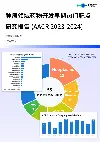Researching cancer by studying lipids cell by cell
2024-04-23
放射疗法
A study has sampled single live cancer cells and measured the fatty lipid compounds inside them. The team saw how those cells transformed in response to changes in their environment.
Imagine being able to look inside a single cancer cell and see how it communicates with its neighbours.
Scientists are celebrating a new technique that lets them study the fatty contents of cancer cells, one by one.
A study led by the University of Surrey has sampled single live cancer cells and measured the fatty lipid compounds inside them. Working with partners at GSK and UCL, and developing new equipment with Yokogawa, the team saw how those cells transformed in response to changes in their environment.
Dr Johanna Von Gerichten, from Surrey's School of Chemistry and Chemical Engineering, said:
"The trouble with cancer cells is that no two are alike. That makes it harder to design good treatment, because some cells will always resist treatment more than others.
"Yet it has always proven tricky to study live cells after they have been removed from their natural environment, in enough detail to truly understand their make-up.
"That is why it is so exciting to be able to sample live cells under a microscope and study their fatty contents one by one."
Individual pancreatic cancer cells were lifted from a glass culture dish using Yokogawa's Single Cellome System SS2000 ™. This extracts single live cells using tiny tubes 10 µm across -- about half the diameter of the thinnest human hair.
By staining the cells with fluorescent dye, the researchers could monitor lipid droplets (stores of fatty molecules inside cells, thought to play an important role in cancer) throughout the experiment.
Then, working with partners at Sciex, researchers developed a new method using a mass spectrometer to fragment the lipids in the cells.This told them about their composition.
The researchers demonstrated that different cells had very different lipid pro They also saw how lipids in the cells changed in response to what was going on around them.
Professor Melanie Bailey said:
"We are really excited to work with scientists from all over the UK to apply this to other types of cells, to better understand infection, immunity and other phenomena as part of our new national facility for single and sub-cellular "omics," SEISMIC, funded by BBSRC and EPSRC.
"We are also part of an International Atomic Energy Agency programme which is exploring the effects of irradiation on cells. We will be working with researchers from all over the world to understand why some cancer cells resist radiation treatment."
Dr Carla Newman, Associate Director, Cellular Imaging and Dynamics at GSK said:
"Our new method paves the way for studying cancer cells in detail we've never seen before.
"One day, we might be able to see how individual cancer cells communicate with their neighbours. That could unlock new, more targeted treatments.
"It's great to see universities and industry come together to produce such ground-breaking research."
The study is published in the journal Analytical Chemistry.
更多内容,请访问原始网站
文中所述内容并不反映新药情报库及其所属公司任何意见及观点,如有版权侵扰或错误之处,请及时联系我们,我们会在24小时内配合处理。
靶点
-药物
-热门报告
立即开始免费试用!
智慧芽新药情报库是智慧芽专为生命科学人士构建的基于AI的创新药情报平台,助您全方位提升您的研发与决策效率。
立即开始数据试用!
智慧芽新药库数据也通过智慧芽数据服务平台,以API或者数据包形式对外开放,助您更加充分利用智慧芽新药情报信息。





